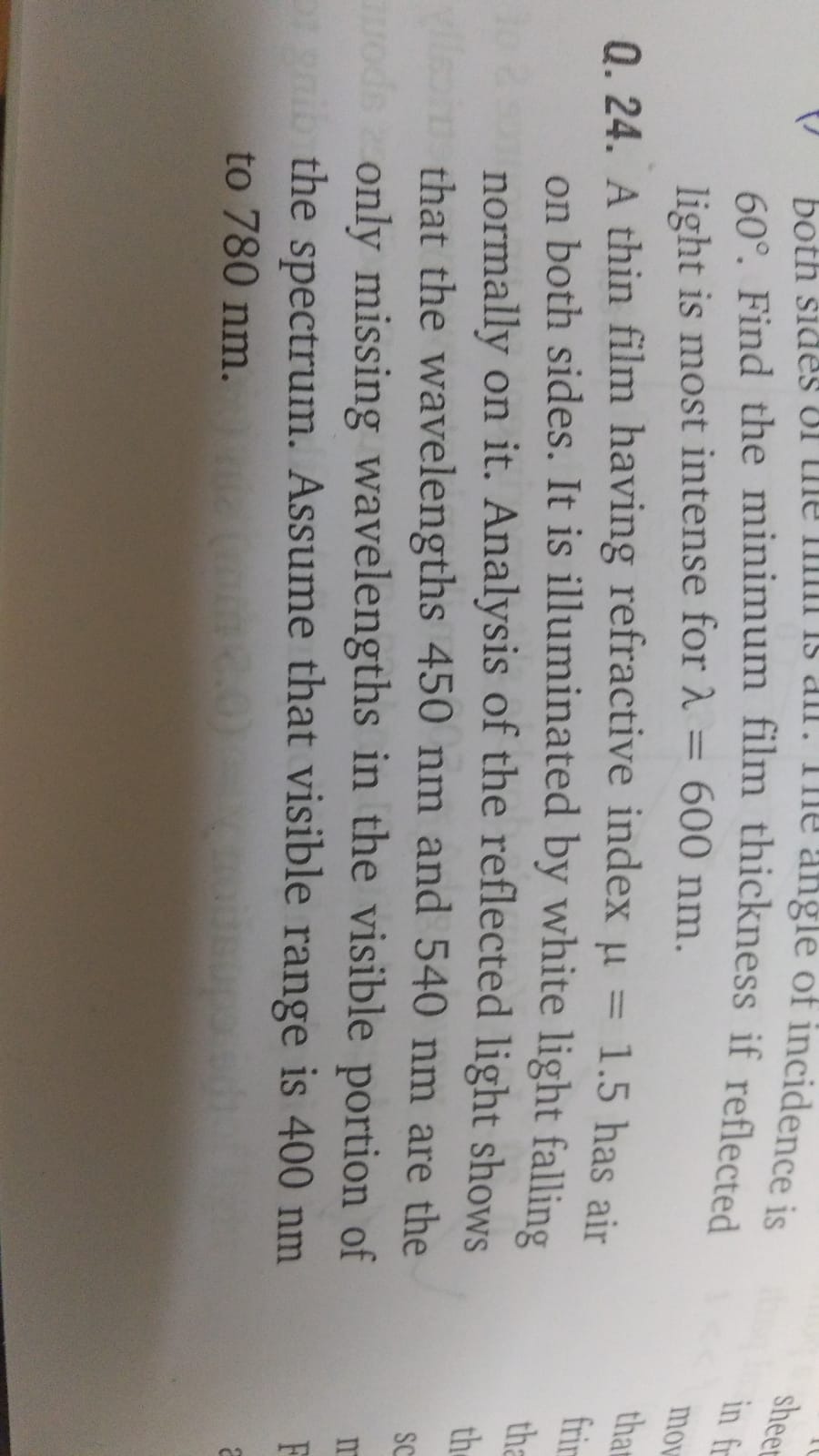Question
Question: both sides of the film is air. The angle of incidence is 60°. Find the minimum film thickness if ref...
both sides of the film is air. The angle of incidence is 60°. Find the minimum film thickness if reflected light is most intense for λ = 600 nm.

The condition for constructive interference (most intense reflected light) in a thin film, considering a phase change of π at the first interface (air-film, as μfilm>μair) and no phase change at the second interface (film-air), is given by: 2μtcosr=2(2m−1)λ where μ is the refractive index of the film, t is the film thickness, r is the angle of refraction, λ is the wavelength of light, and m is an integer. For the minimum film thickness, we take m=1: 2μtcosr=2λ.
Using Snell's Law (n1sini=n2sinr): 1⋅sin60∘=1.5sinr. 23=23sinr. sinr=33.
Now, calculate cosr: cosr=1−sin2r=1−(33)2=1−93=1−31=32=32.
Substitute the values into the condition for minimum thickness: 2⋅(1.5)⋅t⋅(32)=2600 nm. 3⋅t⋅32=300 nm. t⋅332=300 nm. t⋅32=300 nm. t6=300 nm. t=6300 nm. Rationalizing the denominator: t=63006 nm=506 nm.
The minimum film thickness is 506 nm.
Solution
The condition for constructive interference in a thin film when light is reflected from a medium of lower refractive index to a medium of higher refractive index (air to film) is 2μtcosr=(m−21)λ. Since the light is reflected from the film to air, there is no phase change at the second interface. For maximum intensity (constructive interference), the condition is 2μtcosr=(2m−1)2λ. For minimum thickness, m=1, so 2μtcosr=2λ.
Given: Refractive index of the film, μ=1.5 Angle of incidence, i=60∘ Wavelength, λ=600 nm
Using Snell's Law: n1sini=n2sinr 1⋅sin60∘=1.5sinr 23=23sinr sinr=33
Now, find cosr: cosr=1−sin2r=1−(33)2=1−93=1−31=32=32
Substitute the values into the condition for minimum thickness: 2⋅(1.5)⋅t⋅(32)=2600 nm 3⋅t⋅32=300 nm t⋅332=300 nm t⋅32=300 nm t6=300 nm t=6300 nm
Rationalizing the denominator: t=63006 nm=506 nm
